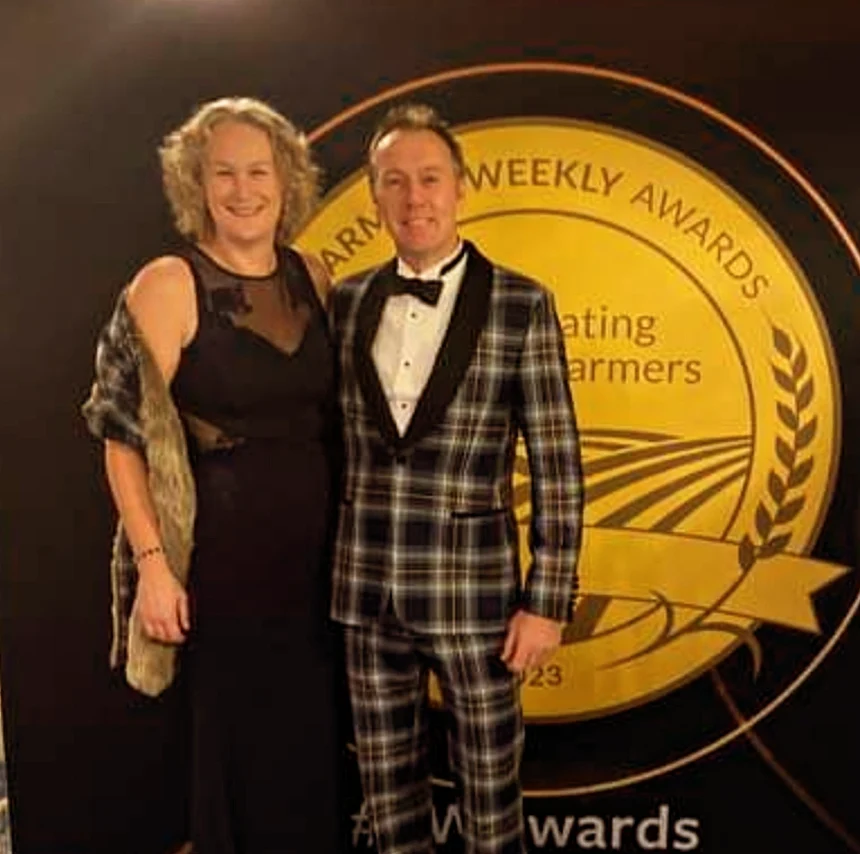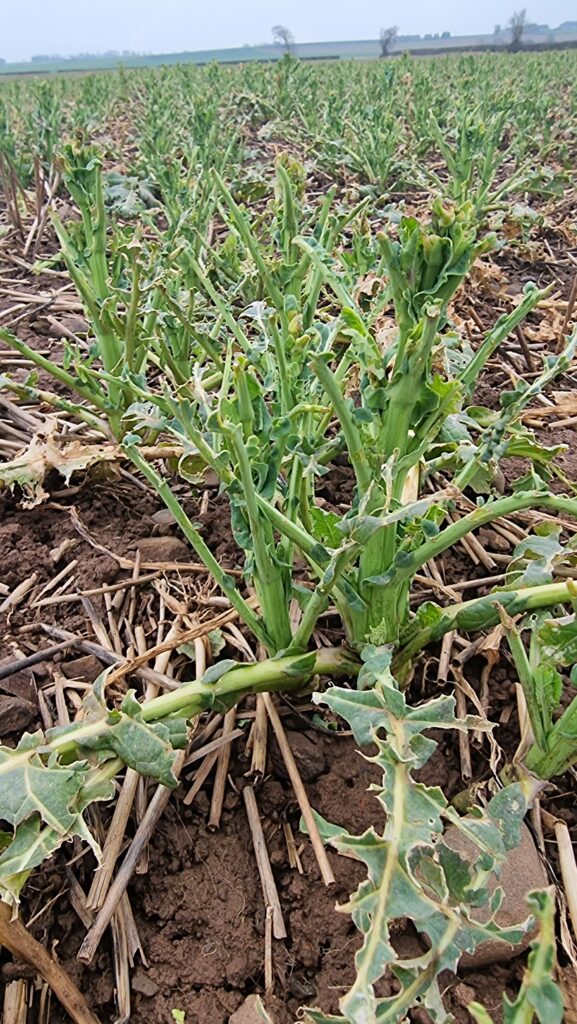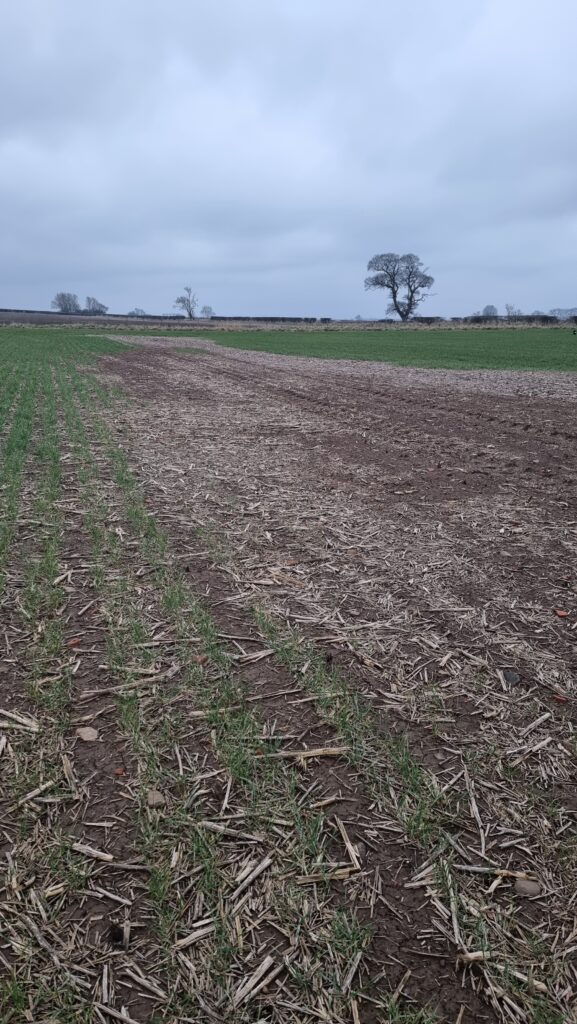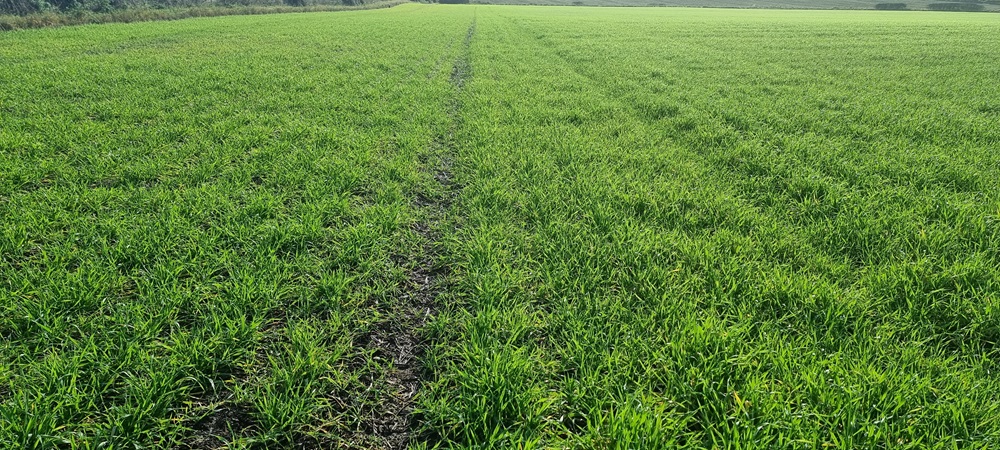I’m not going to dwell on the weather but as it is a major factor in what we do, I will say, despite having constant downpours of around 40-50mm we have fared better than most. My rain gauge filled so many times I must admit I gave up emptying it. Colin McGregor, 4 miles away, didn’t give up, and tells me that we had 45% of our annual rainfall in the last 3 months of 2023. We both agreed that once again we have been very fortunate in this area compared to large parts of the country both North and South. The SFI scheme has maybe become more appealing in a year with so many challenges, and stories about 27% of ground already being taken out of production is a big concern. I don’t blame anyone for making that judgment based on the prospects short term. We don’t have that scheme north of the border so its more of the same for us, which means very little opportunity to enter any scheme for me.
Crops in the area, overall, look good. Some late sown crops, ploughed, power harrowed or heavily worked have really struggled and to use a Scottish comparison they look like porridge, with a shimmering top layer. We have the advantage of still being able to sow early in SE Scotland and that has mostly been the difference between good and bad establishment this year. I made a point of going 10 days earlier this year with my Pearl winter barley after wheat. I raked the field and felt I had achieved a chit this year before spraying off and direct sowing. The crop looks good so far and hopefully with the nitrogen it won’t drop any tillers going forward. I sowed cover in mid-august which established well, whereas the mid-September sown cover struggled at every stage and was very disappointing. The later crop was hit with flea beetle, then slugs which didn’t seem to be around when the first cover went in. The OSR established well except for one late field which flooded and some of that crop is gone. I may sow some spring beans into the patch but I’m not sure if they will make it to harvest or not. The other fields had strong crops of Resort OSR coming into the new year but the pigeons have now made their mark eating every leaf on every plant in one field and a part of another, the rest is untouched. I will use this as a grazing trial as the best OSR crop I’ve had came after heavy pigeon grazing and a good spring.

I am doing some trials for Simpsons Malt on my direct sown Diablo spring barley following cover crop. We have soil tested and will tissue test and finally analyse the harvested barley following cover and non-cover establishment to see any differences or benefits between them. The barley after winter grazed cover last year had a similar yield to ones after overwintered stubble but had almost twice the straw. I hope in a more forgiving growing season that would have been yield. I have been walking the desiccated cover crops and noticed, when crumbling the top layer there seems to be a large amount of slug eggs. I will need to keep a close eye on that prior to sowing in case pellets are required.
One problem I have noticed which is new, is high tide marks. I have fields which gather water in low points, one right outside my kitchen window. The water came up a few times but always went away a few days later saving the crop. The only problem is, now that I have more residue in the top layer the extremities of the water are marked with high tide marks which have rotted out the crop. It’s not a big problem I know, but it is a new one.
I used my penetrometer last autumn to decide the depth of the leading leg on the drill and it has been very interesting. Previously I would have made a decision based on soil conditions, and the fact I have plenty horsepower, this led me to run the leg deeper than required, but I didn’t know that until I started testing for compacted layers in my soil. The biodiversity and profitability group I am part of used the meter to check my soils and the absence of compaction was a refreshing discovery. I subsoiled 2Ha of my farm in 2015 and haven’t done any since. I put the lack of compaction down to a combination of many things. Firstly, and most importantly, the improvement in my soils. This has increased carrying capacity and water infiltration, meaning I am causing less problems from the very beginning. During the season I run my 650 tyres until the crop is well developed and run wide row crops after that, and finally I am careful to control the traffic, where possible sticking to tramlines and chopping straw and finally the tracked combine is very light on its feet. All these things have allowed me to travel on my winter crops earlier and give them the nutrition they require. This has been another bonus, spreading the workload.



Farmers in the area are putting on muck and some of the conditions have been far from ideal causing visible soil damage. I’m often asked why I don’t use a straw for muck deal in my system and it is for that very reason. I do use some hen muck, early season, onto WB stubbles ahead of OSR and some to go on the high N barley but the rest gets chopped cereal, legume and osr straw to help the OM. Conditions have not dried up enough yet to consider drilling beans or barley so I will just have to wait. The spring beans were sown on March 23rd last year and did well, and it looks like it may be a similar sowing date again this year.
In my last piece in the DD I wrote that I was in the final 3 of the FW arable farmer of the year and we were heading to London for the awards night that week, unbelievably I won! Everyone in the category were using reduced tillage, trying to reduce inputs and increasing their margins, all things discussed at length in this magazine. The whole experience has been very rewarding and has made me look again at my system, and what the changes have brought to my farm and my bank balance. Regarding this year’s competition, I would recommend nominating someone, or entering as it has been a very positive experience for me, I have spoken at many meetings and met lots of very interesting people, and I will be one of the judges this year and would love a look around your farms. Good luck.


